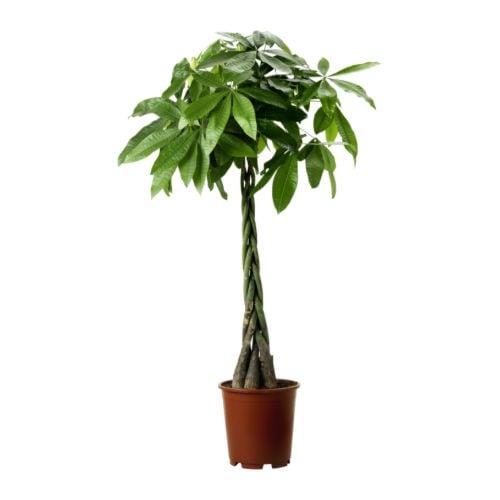A breath of fresh air
In the late '80s, NASA and the Associated Landscape Contractors
of America studied houseplants as a way to purify the air in space
facilities. They found several plants that filter out common volatile
organic compounds (VOCs). Lucky for us the plants can also help clean
indoor air on Earth, which is typically far more polluted than outdoor
air. Other studies have since been published in the
[ندعوك للتسجيل في المنتدى أو التعريف بنفسك لمعاينة هذا الرابط] further
[ندعوك للتسجيل في المنتدى أو التعريف بنفسك لمعاينة هذا الرابط].

Aloe (Aloe vera)
This easy-to-grow, sun-loving succulent helps clear
formaldehyde and benzene, which can be a byproduct of chemical-based
cleaners, paints and more. Aloe is a smart choice for a sunny kitchen
window. Beyond its air-clearing abilities, the gel inside an aloe plant
can help heal cuts and burns.
Aloe “signals for help” when in excessively harmful air.
Aloe is dubbed as an air cleaning expert. One pot of aloe is equal to
nine biological air cleaners. Aloe absorbs formaldehyde, carbon
dioxide, and carbon monoxide. When the amount of toxins in the air have
exceeded healthy amounts the leaves on the Aloe plant become spotted,
signaling for help.


Spider plant (Chlorophytum comosum)
Even if you tend to neglect houseplants, you’ll have a hard
time killing this resilient plant. With lots of rich foliage and tiny
white flowers, the spider plant battles benzene, formaldehyde, carbon
monoxide and xylene, a solvent used in the leather, rubber and printing industries.
One pot of Chlorophytum in 200 square foot room is enough to perform
as an air filter, which releases oxygen and absorbs carcinogens like
formaldehyde and styrene.
Chlorophytum is very strong in absorbing carbon monoxide and
formaldehyde. It decomposes benzene and nicotine in tobacco as well.

Gerber daisy (Gerbera jamesonii)
This bright, flowering plant is effective at removing
trichloroethylene, which you may bring home with your dry cleaning. It’s
also good for filtering out the benzene that comes with inks.

Heart leaf philodendron (Philodendron oxycardium)
This climbing vine plant isn’t a good option if you have kids
or pets — it's toxic when eaten, but it's a workhorse for removing all
kinds of VOCs. Philodendrons are particularly good at battling
formaldehyde from sources like particleboard.

Snake plant (Sansevieria trifasciata 'Laurentii')
Also known as mother-in-law’s tongue, this plant is one of the
best for filtering out formaldehyde, which is common in cleaning
products, toilet paper, tissues and personal care products. Put one in
your bathroom — it’ll thrive with low light and steamy humid conditions
while helping filter out air pollutants.

Golden pothos (Scindapsus aures)
Another powerful plant for tackling formaldehyde, this
fast-growing vine will create a cascade of green from a hanging basket.
Consider it for your garage since car exhaust is filled with
formaldehyde. (Bonus: Golden pothos, also know as devil’s ivy, stays
green even when kept in the dark.)

Chrysanthemum (Chrysantheium morifolium)
The colorful flowers of a mum can do a lot more than brighten a
home office or living room; the blooms also help filter out benzene,
which is commonly found in glue, paint, plastics and detergent. This
plant loves bright light, and to encourage buds to open, you’ll need to
find a spot near an open window with direct sunlight.

Weeping fig (Ficus benjamina)
A ficus in your living room can help filter out pollutants that
typically accompany carpeting and furniture such as formaldehyde,
benzene and trichloroethylene. Caring for a ficus can be tricky, but
once you get the watering and light conditions right, they will last a
long time.

Azalea (Rhododendron simsii)
Bring this beautiful flowering shrub into your home to combat
formaldehyde from sources such as plywood or foam insulation. Because
azaleas do best in cool areas around 60 to 65 degrees, they’re a good
option for improving indoor air in your basement if you can find a
bright spot.

Bamboo palm (Chamaedorea sefritzii)
Also known as the reed palm, this small palm thrives in shady
indoor spaces and often produces flowers and small berries. It tops the
list of plants best for filtering out both benzene and
trichloroethylene. They’re also a good choice for placing around
furniture that could be off-gassing formaldehyde.

English ivy (Hedera helix)
A study found that the plant
[ندعوك للتسجيل في المنتدى أو التعريف بنفسك لمعاينة هذا الرابط]. It has also been shown to filter out formaldehyde found in some household cleaning products.
Ivy is the king in absorbing formaldehyde. Ivy is the most effective indoor plant in absorbing formaldehyde.
Ivy per square meter can absorb 1.49 grams of formaldehyde. It also
absorbs harmful substances like benzene. In 24 hours, ivy can absorb
90% of indoor benzene.


Chinese evergreen (Aglaonema Crispum 'Deborah')
This easy-to-care-for plant can help filter out a variety of
air pollutants and begins to remove more toxins as time and exposure
continues. Even with low light, it will produce blooms and red berries.

Warneck dracaena (Dracaena deremensis 'Warneckii')
Combat pollutants associated with varnishes and oils with this
dracaena. The Warneckii grows inside easily, even without direct
sunlight. With striped leaves forming clusters atop a thin stem, this
houseplant can be striking, especially if it reaches its potential
height of 12 feet.

Peace lily (Spathiphyllum)
Shade and weekly watering are all the peace lily needs to
survive and produce blooms. It topped NASA’s list for removing all three
of most common VOCs — formaldehyde, benzene and trichloroethylene. It
can also combat toluene and xylene.

Red-edged dracaena (Dracaena marginata)
The red edges of this easy dracaena bring a pop of color, and
the shrub can grow to reach your ceiling. This plant is best for
removing xylene, trichloroethylene and formaldehyde, which can be
introduced to indoor air through lacquers, varnishes and gasoline.
 Pachira absorbs smoke well.
Pachira absorbs smoke well.If you can’t avoid smokers in your life, you can put pachira around you,
which is effective at absorbing smoke. It also absorbs carbon dioxide
and monoxide, and releases oxygen.

 Adiantum absorbs radiation from computers and printers
Adiantum absorbs radiation from computers and printers.
Adiantum absorbs 20 micrograms of formaldehyde per hour and it is
considered the most effective natural cleaner. If you work with paint
or have smokers around you, you should consider Adiantum. This plant
also absorbs Xylene and Toluene released by monitors and printers.
 Rubber trees are helpful in eliminating harmful substances
Rubber trees are helpful in eliminating harmful substances.
The rubber tree is a multi-functional cleaner that eliminates harmful
substances in the air. They can absorb carbon dioxide, carbon monoxide
and they collect granules which help reduce the dust around you.
 Asparagus can kill viruses and bacteria
Asparagus can kill viruses and bacteria.
The fragrance of asparagus absorbs the bacteria and viruses in the air which can help optimize your health.
 Monstera improves air quality at night.
Monstera improves air quality at night.Monstera is really good at absorbing formaldehyde. It also absorbs
carbon dioxide at night and releases the oxygen, so it is helpful in
improving air quality. It is also good looking and relatively easy to
maintain.
 Cacti is the best in reducing radiation and bacteria.
Cacti is the best in reducing radiation and bacteria.Cacti is very strong in eliminating bacteria. In tackling pollution,
cacti is also great at reducing radiation. In addition, cacti absorbs
carbon dioxide at night to release oxygen. Putting cacti in the room is
helpful in sleeping and supplementing oxygen.
 Clivia keeps air fresh in winter.
Clivia keeps air fresh in winter.One adult Clivia can absorb one liter of air and release 80% of oxygen
overnight. It can perform photosynthesis under very weak light. Two or
three pots of clivia in a room can absorb the smoke. In winter in the
north, even with doors and windows closed, Clivia can adjust the air
make it fresh.

